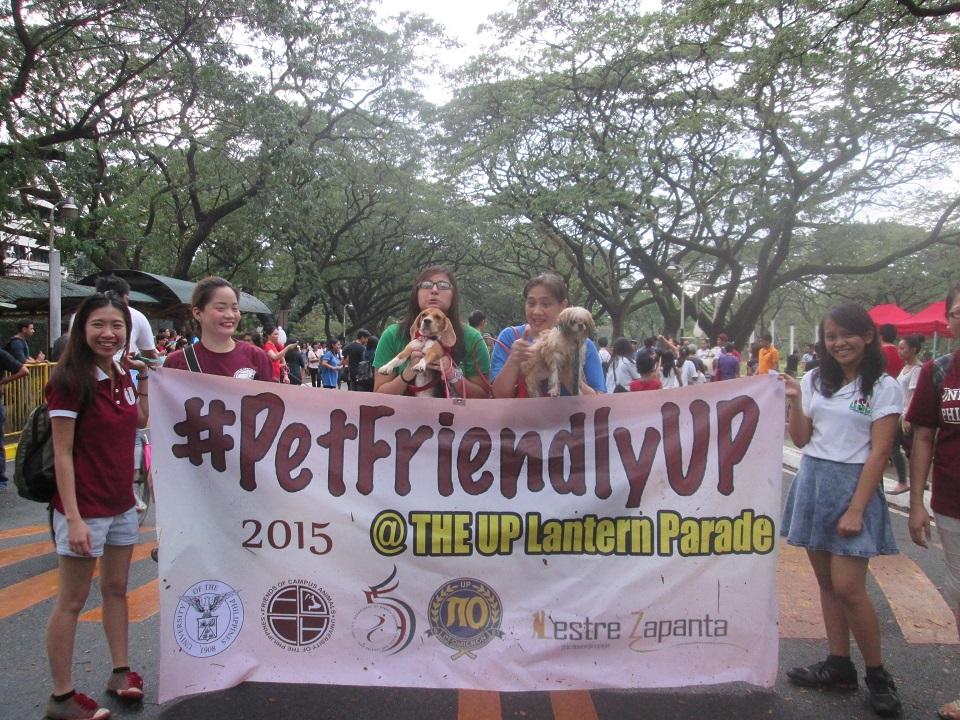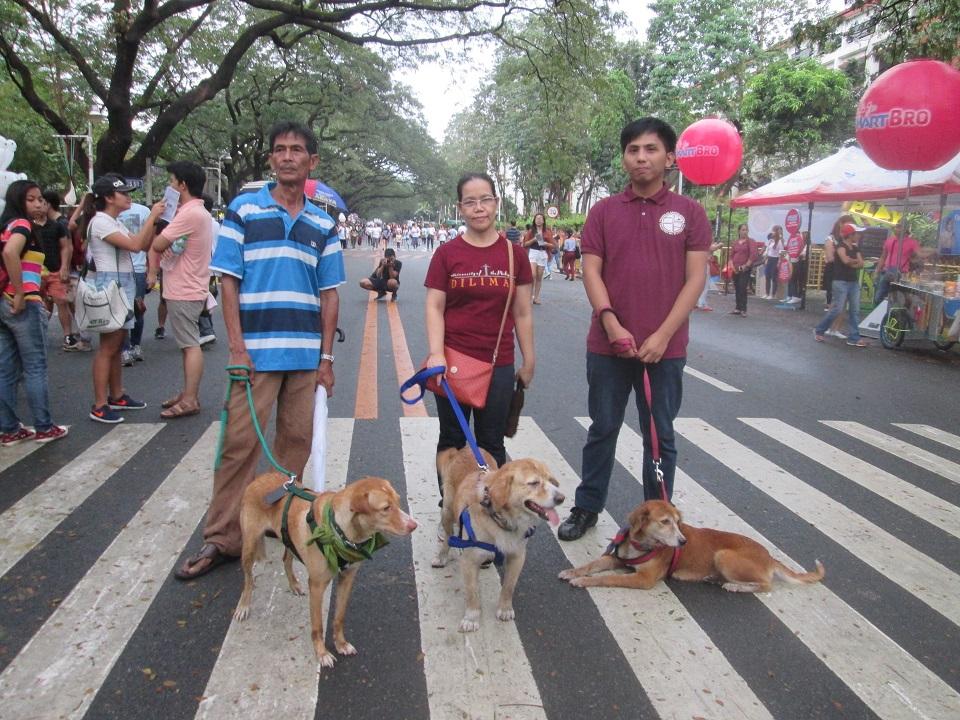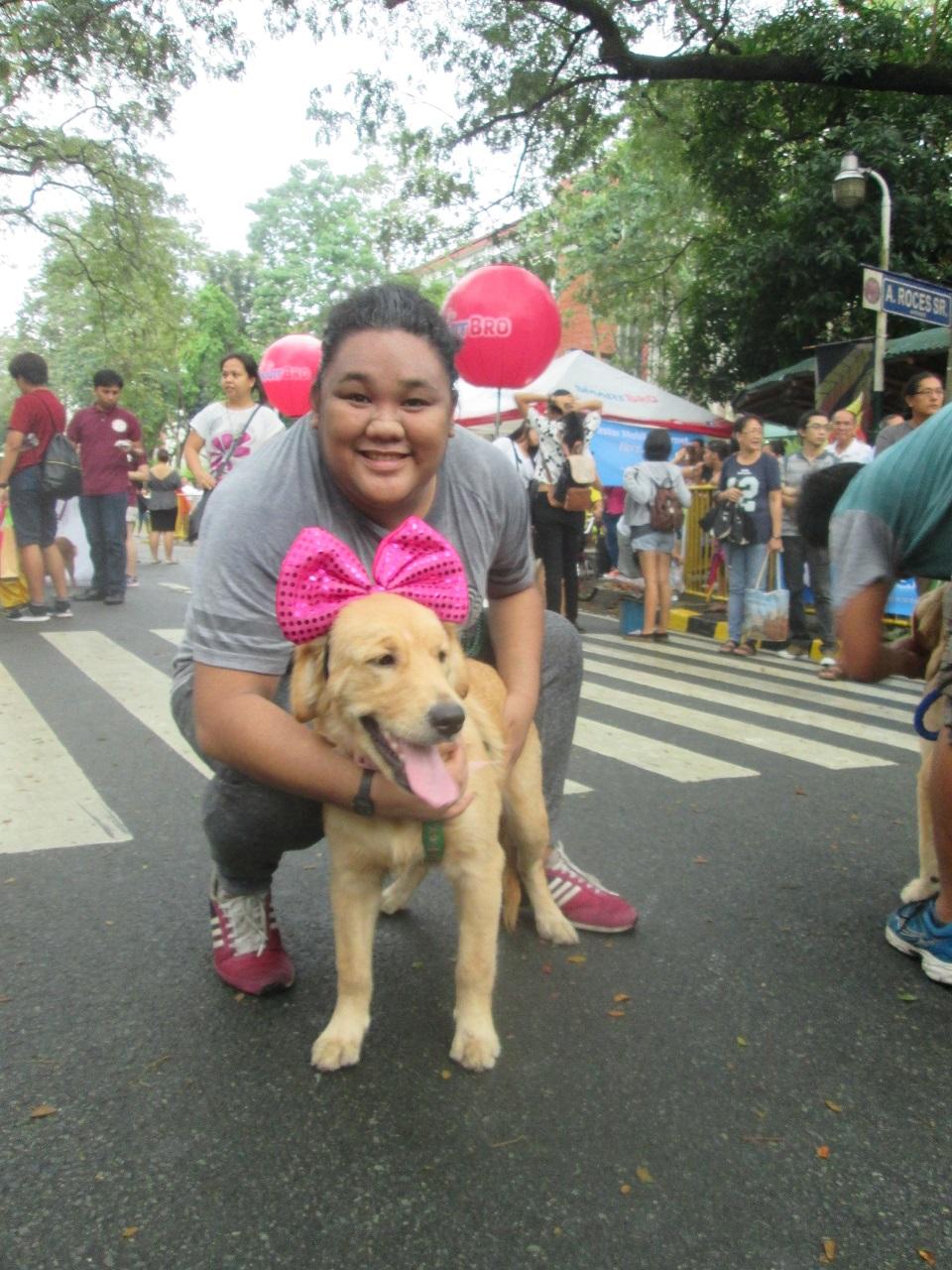A Lantern Parade dog pack walk and the true meaning of community
The rain hammered my giant umbrella as I walked with my three dogs to the rendezvous point for the pack walk. The Academic Oval at the University of the Philippines in Diliman was empty except for a few people and vendors offering street food and drinks. I dreaded the thought of my dogs’ disappointment over the possibility of a cancelled walk.
I wondered how the Lantern Parade would fare in the downpour. The pack walk had been scheduled half an hour before the parade in order to give the dogs a head start over the cannons and band music that could rattle even the calmest of animals.
But after 30 minutes, the rain stopped as abruptly as it had come and suddenly the street came to life. Around 60 dogs of all colors, breeds and sizes poured into the street with tails wagging, barking out canine greetings and pulling on their leash as they excitedly sniffed their new doggie friends.

The crowd cheered and roared in laughter as dogs smelled each other’s butts and short-legged pups tried to keep up with the large breeds. Santa’s reindeer stopped to charm the crowd as a very elegant Golden Retriever with a ridiculous pink ribbon posed for some shots.
Some owners carried their canine babies while others were pulled by their dogs. I even met a one-and-a-half-year-old pug named Cooper who was being pushed in a baby stroller!
Most of the dogs at the pack walk came from well-admired breeds: bulldogs, Jack Russell terriers, Siberian huskies, Labrador and golden retrievers, Japanese spitzes, toy poodles and chihuahuas.
My aspins Cosette, Molly and Jana gamely joined the canine rendezvous. No one seemed to care or notice that they were aspins. People of different ages reached out to pat and stroke them.
Molly, who could pass for a Labrador retriever, barked and charged at some dogs while ignoring others. But it was a happy kind of bark. Maybe he felt he was in familiar territory. He used to live here at UP, until he was abandoned. I rescued him in January 2014.

There are an estimated 7,000 dogs in the UP community, but the number could be higher: feral dogs that shy away from people may not have been counted in the census. New pups are being born every week to un-spayed bitches. Dogs are dumped there by people who can no longer care for them.
Molly is one of them. Raised in a home with two other dogs by people who cared for and loved him, he suddenly found himself in the streets when the dog fights worsened and his humans felt they could no longer control him.
A barangay dog catcher has estimated that about 100 stray and feral dogs inhabit defined territories inside the campus, living on scraps left by kind souls.
The population of community cats is growing too. This increase has caused a rise in cases of animal abuse from people who hate or dislike stray animals. Last July, nine cats and kittens that roamed near a canteen were shoved into a sack and dumped in an abandoned lot. Fortunately, concerned citizens came to the rescue and re-homed them.
Though feral animals evade contact with humans and feed only at night, they once lived in homes where they were cared for. The memory of a home with humans, on the other hand gives these stray animals the confidence to beg for food and a friendly stroke.
Most of the community animals in the campus cannot be categorized as feral. In the College of Mass Communication, for instance, students can be seen reading a book with cats on their laps. Or cats can be seen listening to students discussing the theories of communication.
So although there are quite a number of people in UP who dislike and even hate animals, I believe there are more who love and respect them.

The Diliman-based animal welfare group Friends of Campus Animals (FOCA UP) seeks to promote harmony between people and animals in the university. To do this, FOCA organizes events to raise awareness on animal welfare issues like responsible pet ownership. FOCA partnered with the Office of the Vice-Chancellor for Community Affairs (OVCCA) to organize the pack walk at the Lantern Parade and a dog picnic last October.
It’s a path filled with challenges, but we’re hopeful because the Chancellor and Vice-Chancellor for Community Affairs are compassionate people who understand that a community includes people and the animals that live in their midst. They know how to balance heart and intellect.
At the dog walk, everyone I spoke to expressed hope that the presence of a contingent of dogs at the Lantern Parade would show UP officials that responsible pet ownership is a better answer to the issues that triggered the dog ban in the academic oval years ago.
Responsible owners walk their dogs on leashes, scoop up their dog’s poop, and make sure their canine companions are vaccinated against rabies and other diseases. Responsible pet owners also consider the spaying and neutering of their animals. Likewise, community animals have to be neutered to avoid overpopulation.
Last night, the dogs and their owners marched with a single goal in mind: to show the world that dogs are part of the community and a ban on dogs has no place in UP.
We’re keeping our fingers crossed that officials in the country’s premier university will fan the flames of compassion and honor the true meaning of community. — BM, GMA News
FOCA UP president Khrysta Imperial Rara and other FOCA members conceptualized and organized the dog pack walk during the UP Lantern Parade on Monday.



